Written by Calvin on June 2, 2006/Calvin's Corner
Why I Prefer the Older Rides
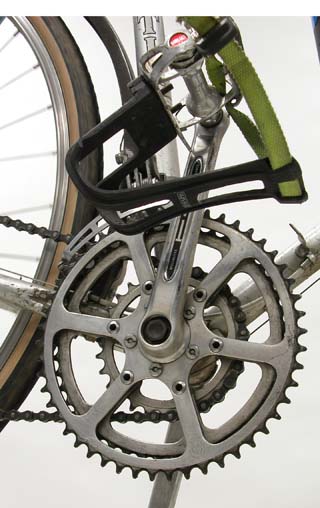 Figure 1: The two outer rings are close in sizing, which is called "half-step" gearing.
Figure 1: The two outer rings are close in sizing, which is called "half-step" gearing.
My friends say that I seem to prefer older bikes, and, in fact, they’re right. I do like the older machines, but only for myself. Actually, I love the newer technologies. Hydraulic braking systems, electronic shifting, 10-speed rear cassettes, carbon frames and components of all kinds are fascinating. Learning new skills, new service technology, and then applying your knowledge is what appeals to me as a mechanic.
However, for my riding, give me the older machines. I feel they are generally more interesting, and have more of a story to tell. Certainly, part of this is that I feel connected to the older machines, as we share the history of having been around a while. I started my biking at the end of the era of the cottered crank, in the early 1970’s. (I must say that is was a pleasure to see them go away.) The older machines are generally more service friendly as well. Parts can be truly overhauled, that is, taken apart, clean, greased, reassembled, and adjusted.
Currently I have 6 bikes in my fleet. Each one has aspects that I like and find interesting. Here is a reveiw of some of these features.
For the riding here in Minnesota, the half-step gearing works great. But, we have some good hills that dive into the Mississippi river or St. Croix River valley that need the 28 tooth up front (Figure 1).
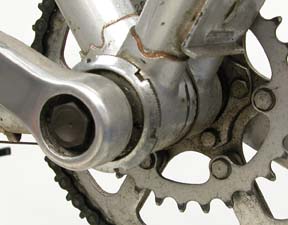 Figure 2: Adjustable bottom bracket and half-step gearing.
Figure 2: Adjustable bottom bracket and half-step gearing.
Some people view the aspect of an overhaul as a negative. They would prefer to simply replace parts and throw things away. Bottom brackets are an example of this. The modern bottom brackets tend to use a “cartridge bearing.” These are installed, ridden, and then disposed of. However, there is nothing special about cartridge bearings, as they contains ball bearing and races like any ball bearing system (Figure 2). The term “sealed bottom bracket” has taken on special meaning to some people, but cartridge bearing are not any better sealed then a good “cup and cone” system with rubber seals.
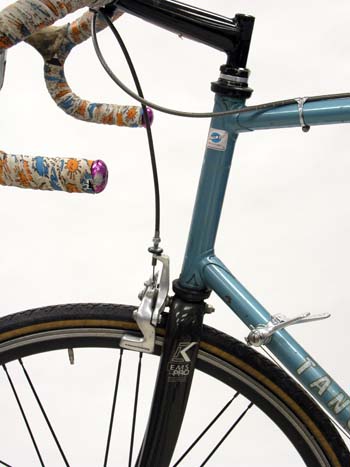 Figure 3: The old (Tanguy Frame—1983) with the new (carbon fork).
Figure 3: The old (Tanguy Frame—1983) with the new (carbon fork).
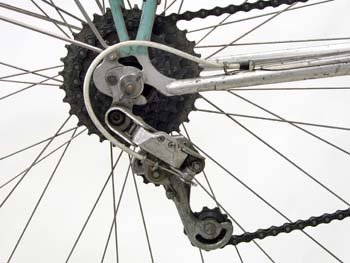 Figure 4
Figure 4
Threaded steering columns with the quill stems are easily adjustable...typically upward in my case (Figure 3). You can raise and lower the bars without spacers and readjusting the headset each time.
I also feel there is a place for friction shifting, as you come to a better understanding of indexing. The two work on the same principle; a chain is just pushed around to get the gear you need. I use clamp on down tube shifter on my road bike (Figure 3). My first shifting of Shimano hyperdrive cogs was on friction. Even on friction, those shifting ramps and teeth would grab that poor chain and drag it up to the next gear, no matter the load (Figure 4).
Before the linear pull brake there was the cantilever (Figure 5). The two are the same in principle. Keep the straddle wire carrier low on the cantilever for good mechanical advantage when braking. As a side note, I am not ashamed to use fenders now, and even a kickstand.
The modern suspension forks today are excellent. They offer much more travel then this old Mag 21. However, with the older forks you can again get inside and change things. Ports can be drilled and polished. The top of my fork has some extra plumbing that connects the two legs (Figure 6). Pressure is always the same between them. For light riding, it is not big deal, but when the legs compress for a big hit, small amounts of air pressure or even different oil height differences can be result in performance issues.
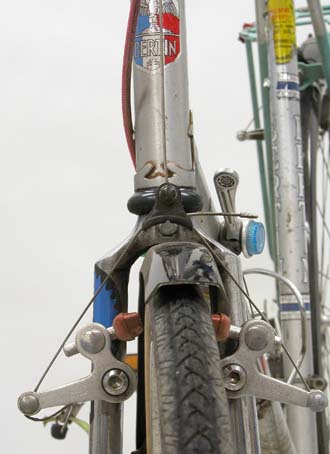
Figure 5: Mafac cantilevers.
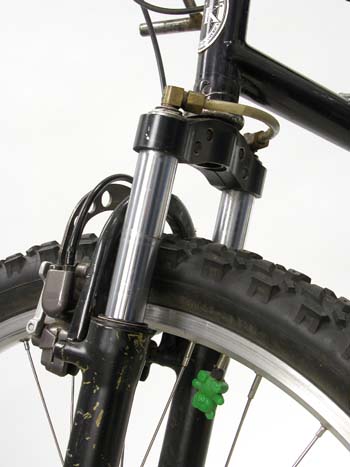
Figure 6: Mag 21 blades with an old school crown. Hydraulic rim calipers round off the package.